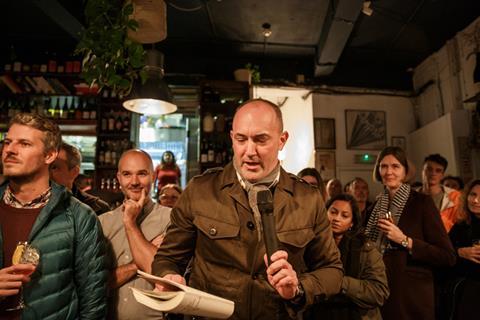‘Most modular housing is crude, overscaled and a complete blight’ – Paul Karakusevic

Leading housing architects have criticised the government’s drive to transform the industry through the use of modern methods of construction.
Speaking at a debate this week on the quality of new homes, Paul Karakusevic, of Karakusevic Carson Architects, described most volumetric modular homes – ones that are fully constructed off-site – as a “blight” on their locations.

Similarly, Cany Ash, of architect Ash Sakula, said the government’s increasing rhetoric around off-site build was a “religion” which ignored the complexity of place-making.
The comments come in the week that government agency Homes England invested £30m in volumetric modular builder Ilke Homes and after housing minister Esther McVey announced the appointment of consultant Mark Farmer as the government’s Modern Methods of Construction (MMC) champion.
Famer will be tasked with developing plans, announced last month by McVey, for a “construction corridor” in the north focused on MMC, generating £40bn of output a year and employing 80,000 people.
But Ash and Karakusevic said the drive for ever-increasing use of MMC was misplaced. Karakusevic described the majority of “Build to Rent” housing, much of which uses MMC, as an “absolute abomination”.
He addedt: “Most modular housing and volumetric construction I have witnessed in the UK is also crude, overscaled and a complete blight on the city.”
At the same event Ash said architects should “resist the sirens of offsite solutions” and “put it back in its place” as just one part of a drive to humanise the UK’s built environment.
Most modular housing and volumetric construction I have witnessed in the UK is also crude, overscaled and a complete blight on the city
Paul Karakusevic
“The government has a shorter and shorter attention span and this innovative stuff seems to make them happy,” she said. “It makes a lot of other middlemen very happy. It just does not take in the complexity of building places. It’s like a religion.”
She also criticised many offsite solutions for appearing to offer repetition, when technology should instead be being used to offer increase variation to suit different families and households with different needs.
Proponents of offsite and modular housing say the idea that homes built using modern methods are poorly designed is a hangover from a previous era of offsite construction. Newly appointed MMC champion Mark Farmer has previously made the case that the existing construction industry will lack the skills to meet the demand for homes without widespread adoption of factory methods, and the government says MMC can be part of the answer to poor housing design.
Announcing the investment in Ilke Homes, Esther McVey said: “It’s vital we invest in new technology to get Britain building. Homes built using modern methods can be of higher quality, greener and built to last.”
Ash and Karakusevic were speaking at an event entitled British Housing: The Crude the Bad and the Ugly, put on by architect Fourth Space in Hackney, the last in this year’s series of controversy-courting Negroni Talks.
>> Also read: Gossip influences architects we hire, says leading developer
>> Also read: ‘Architects need to put down their pencils, get out and campaign’
Karakusevic also used the event to hit out at volume housebuilders, whom he said benefited from a “whole market [which] is rigged in their favour.”
And Ash argued that it was not systems that would transform society but the power of ideas.

“Spaces with so much juicy potential are so easily turned into non-places with spreadsheet solutions,” she warned.
“The real politics surrounding housing is so strong that practices with imaginative thoughts have to be kept under lock and key. In other fields of design natural thinking and sensuous fumblings are given space to develop into full fruition. Housing is a place where it’s a crime to seem foolish. Real people have to live there, you know.
“We’ve let others edit out some of the space we need to breathe and design. The buildings and housing layout – with a few honourable exceptions – look like this spreadsheet. Are we complete mugs in this system? Of course we are.”
















16 Readers' comments